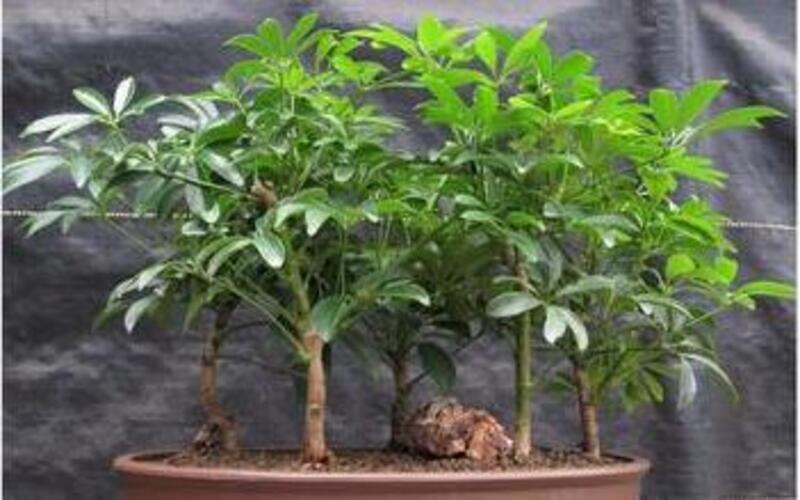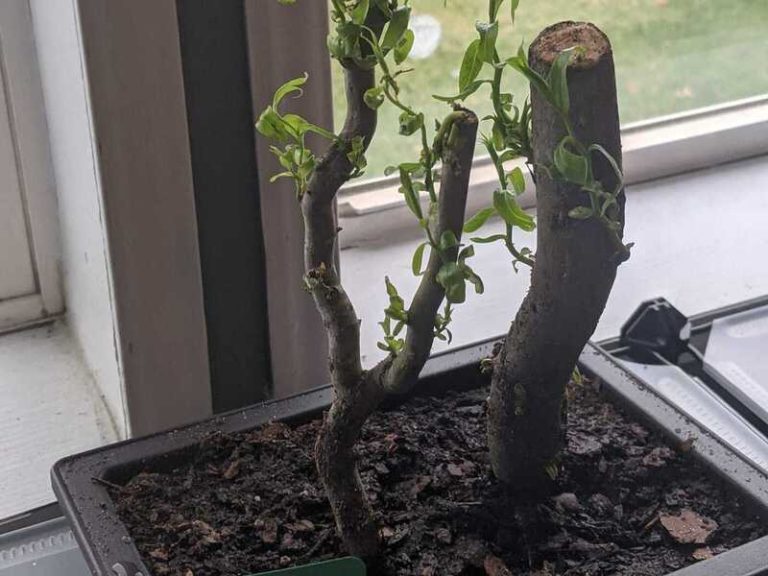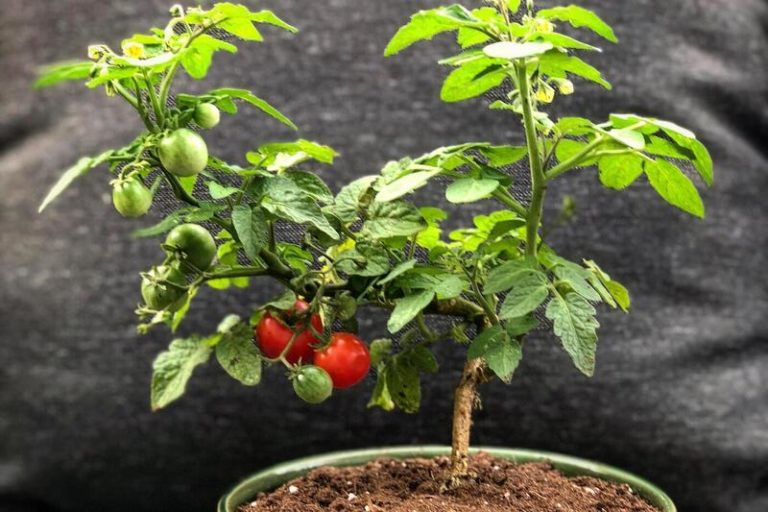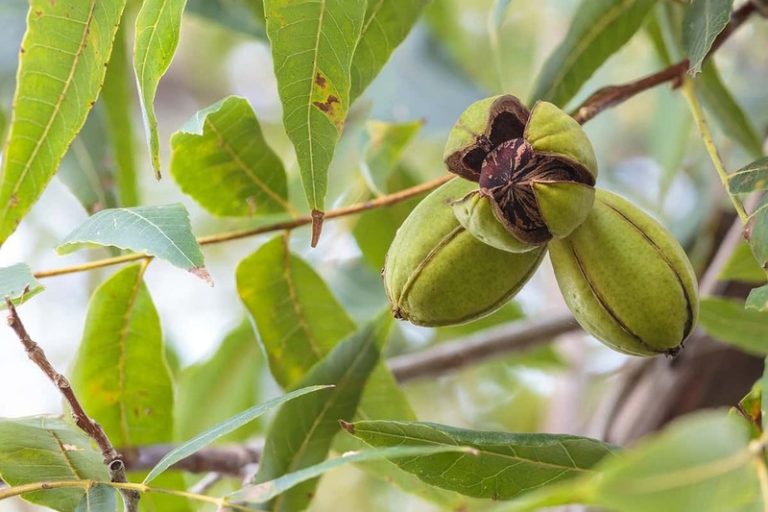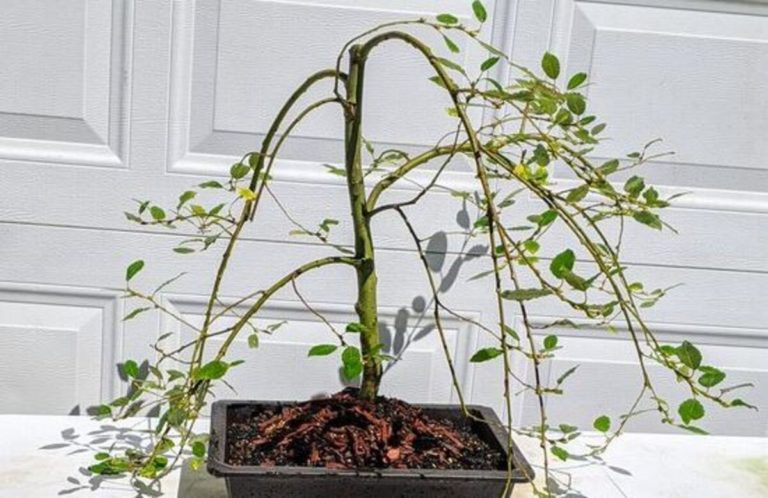Hawaiian Umbrella Bonsai: A Miniature Beauty
Unique and beautiful, bonsai plants are a great way to bring the outside inside. The Hawaiian Umbrella Bonsai is a well-loved bonsai variety thanks to its eye-catching beauty, hardiness, and low maintenance needs. Learn how to maintain a beautiful Hawaiian Umbrella Bonsai by reading this article’s advice on basic care, styling, and frequent problems.
What is Hawaiian Umbrella Bonsai?
Hawaiian Umbrella Bonsai, is a species of bonsai tree that is widely grown because to its stunning beauty, sturdiness, and low maintenance requirements. The compact and thick foliage of this small tree, which may reach a height of 12 inches, makes it a favorite among Bonsai lovers. The tree’s trunk is robust and solid, and its dark green, glossy leaves cluster in groups of seven to nine.
The Hawaiian Umbrella Bonsai is a symbol of longevity, good luck, and prosperity in Hawaiian culture. It can be grown indoors or outdoors, and requires bright, indirect light, moderate watering, and regular pruning and fertilization.
Types of Hawaiian Umbrella Bonsai:
Many varieties of Hawaiian Umbrella Bonsai have their own individual looks and ways of maturing. The most popular ones are listed below:
Dwarf Hawaiian Umbrella Bonsai: This type of Bonsai is small in size, typically growing to around six inches in height. It has a thick, woody trunk and small, delicate leaves.
Large Hawaiian Umbrella Bonsai: This type of Bonsai can grow up to three feet in height and has a thick, sturdy trunk. Its leaves are larger than the Dwarf Hawaiian Umbrella Bonsai.
Variegated Hawaiian Umbrella Bonsai: The leaves of this particular Bonsai are striped both green and white. It’s a beautiful plant that stands out both indoors and out.
Gold Capella Hawaiian Umbrella Bonsai: This type of Bonsai has small, bright green leaves with yellow tips. It is a beautiful plant that adds a pop of color to any space.
Umbrella Tree Hawaiian Bonsai: This variety of bonsai has a leaf cover in the shape of an umbrella. It is a popular option for outdoor landscaping and can reach a height of 30 feet.
These are but a sample of the numerous variations available for Hawaiian Umbrella Bonsai. It’s vital to select the proper variety for your growing conditions and experience level, as they each have their own distinctive traits and growth patterns.
Characteristics of Hawaiian Umbrella Bonsai:
The Hawaiian Umbrella Bonsai is a stunningly original bonsai tree with a number of distinguishing traits. Key features of this well-liked Bonsai specimen are as follows.
Small size: The Hawaiian Umbrella Bonsai is a small tree that develops to a maximum height of 12 inches. This makes it an excellent choice for indoor gardening because it can be cultivated in small places.
Thick trunk: The trunk of the tree is thick and woody, giving it a powerful and solid appearance. The trunk may be trained to grow in many forms and fashions, increasing its aesthetic attractiveness.
Dense foliage: The foliage of the Hawaiian Umbrella Bonsai is lush and grows in clusters of seven to nine leaves. The glossy, dark green leaves may be sculpted and fashioned to produce a distinctive appearance.
Resilience: This Bonsai tree is known for its resilience and ability to withstand different growing conditions. It can tolerate low light, temperature fluctuations, and occasional neglect, making it a great choice for beginners.
Longevity: The Hawaiian Umbrella Bonsai can live for many years with proper care, making it a symbol of longevity and good luck in Hawaiian culture.
These qualities make the Hawaiian Umbrella Bonsai a popular option among bonsai enthusiasts of all skill levels. This diminutive tree will add elegance and appeal to your indoor or outdoor space, whether you’re a novice or an expert gardener.
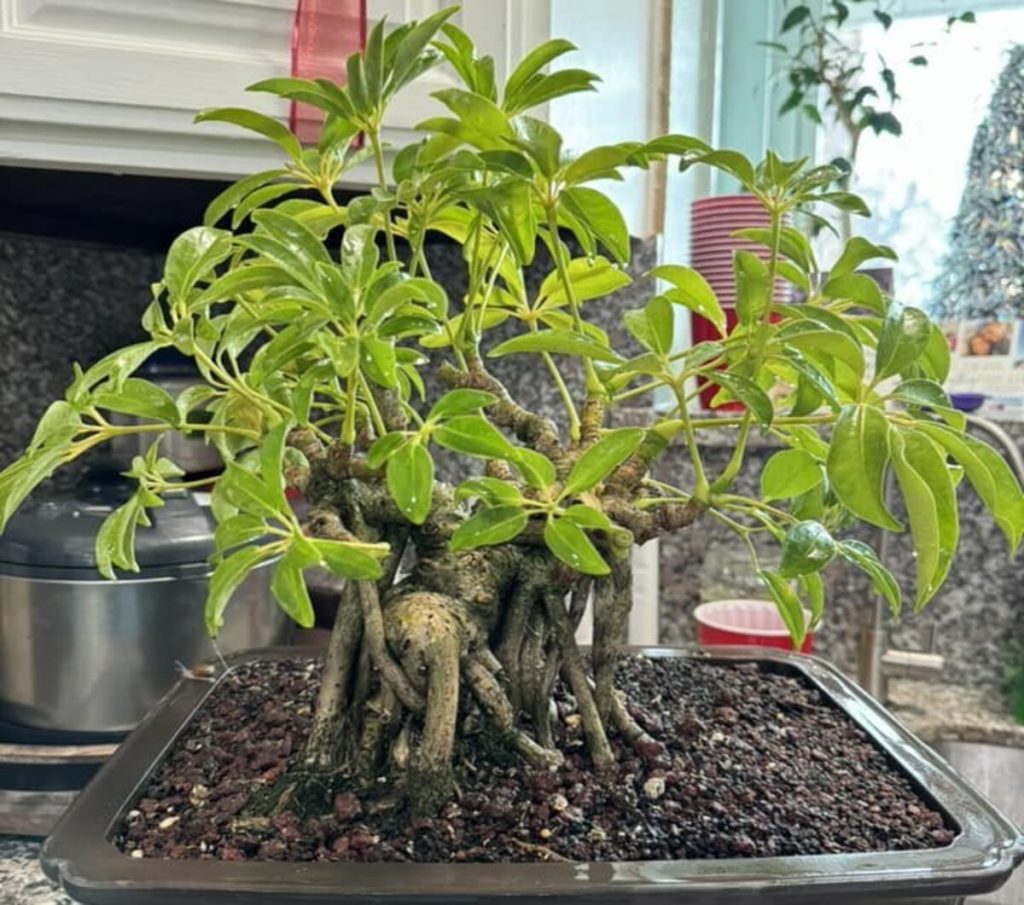
How to Grow Hawaiian Umbrella Bonsai
Growing a Hawaiian Umbrella Bonsai is a rewarding and enjoyable experience that requires patience, care, and attention. Here are some tips on how to grow a healthy and beautiful Hawaiian Umbrella Bonsai:
Choose the right container: The container should be tiny enough to contain the plant’s roots, but large enough to accommodate its growth. The container must have drainage openings to prevent flooding.
Select the right soil: The soil needs to be easy to drain and full of nutrients. For Hawaiian Umbrella Bonsai, a mix of 50% bonsai soil and 50% perlite or sand works well.
Watering: The Hawaiian Umbrella Bonsai should be watered when the soil feels slightly dry to the touch. When you water, you should make sure that the water gets to the roots.
Fertilizing: During the growing season, a balanced, water-soluble fertilizer should be used to feed the tree every two weeks.
Pruning and Wiring: Regular pruning and wiring are necessary to maintain the desired shape and size of the tree. Pruning should be done in early spring, while wiring can be done throughout the year.
Sunlight: The Hawaiian Umbrella Bonsai needs bright, indirect sunlight for optimal growth. Too much direct sunlight can damage the leaves and cause them to yellow or burn.
Temperature: This Bonsai tree prefers warm temperatures between 60°F to 80°F. It should be protected from extreme temperatures and drafts.
Pest control: Common pests include spider mites and scale insects. Regular monitoring and treatment with insecticidal soap can help prevent infestations.
You may develop a healthy and attractive Hawaiian Umbrella Bonsai that will live for years by following these guidelines.
Benefits of Hawaiian Umbrella Bonsai
Hawaiian Umbrella Bonsai is not only a lovely addition to your home or business, but it also has various advantages. Here are some of the advantages of owning a Hawaiian Umbrella Bonsai:
Aesthetically pleasing: The unique and intricate appearance of the Hawaiian Umbrella Bonsai adds a touch of nature and beauty to your indoor or outdoor space.
Stress relief: Taking care of a Bonsai tree is a peaceful and tranquil hobby that may aid in the reduction of stress and anxiety.
Air purifier: Bonsai trees are known for their air-purifying properties. The Hawaiian Umbrella Bonsai helps to remove toxins and pollutants from the air, improving air quality and promoting a healthier environment.
Educational: Raising and caring for a Bonsai tree gives an educational chance to learn about plant and tree growth and development.
Good luck: The Hawaiian Umbrella Bonsai is a sign of longevity and good luck in Hawaiian culture, making it an ideal present for friends and family.
Flexibility: The Umbrella of Hawaii Bonsai is an excellent alternative for those with restricted outdoor or interior space because of the plant’s adaptability.
Overall, having a Hawaiian Umbrella Bonsai has a number of benefits that can improve your physical and mental health and make your living space more beautiful.
Styling and Design for Hawaiian Umbrella Bonsai
Styling and designing your Hawaiian Umbrella Bonsai is a creative process that allows you to showcase your personal taste and preferences. Here are some tips on how to style and design your Hawaiian Umbrella Bonsai:
Choosing a style: Hawaiian Umbrella Bonsai can be fashioned in a variety of styles, including formal upright, casual upright, slanting, cascade, and semi-cascade. Pick a design that suits the natural curve of your tree and fits the overall appearance and feel of your area.
Wiring: Wiring is used to shape and style your Bonsai tree. Use flexible copper or aluminum wire to wrap around the branches and gently bend them into the desired shape. Be careful not to wire too tightly or for too long, as this can damage the bark.
Pruning: Pruning is used to shape and maintain the desired size and shape of your Bonsai tree. Regular pruning helps to promote new growth and maintain the tree’s overall health.
Pot selection: The pot you choose for your Hawaiian Umbrella Bonsai should complement the tree’s size and style. Choose a pot that is slightly larger than the root system and has drainage holes for proper water drainage.
Soil selection: You should choose a nutrient-rich soil that drains well for your bonsai tree. Use a mix of organic and inorganic materials, like peat moss, perlite, and vermiculite.
Accent elements: Adding accent elements like rocks, moss, and miniature figurines can enhance the overall look and feel of your Hawaiian Umbrella Bonsai.
Maintenance: Your bonsai tree needs regular attention, such as trimming, wiring, and repotting, to be healthy and beautiful. Make sure your tree is nourished, watered, and monitored for pests and illnesses.
By following these tips, you can style and design your Hawaiian Umbrella Bonsai to showcase your personal taste and preferences while maintaining the tree’s overall health and beauty. Remember that styling and designing a Bonsai tree requires patience and attention to detail, but the end result is a beautiful, unique addition to your space.
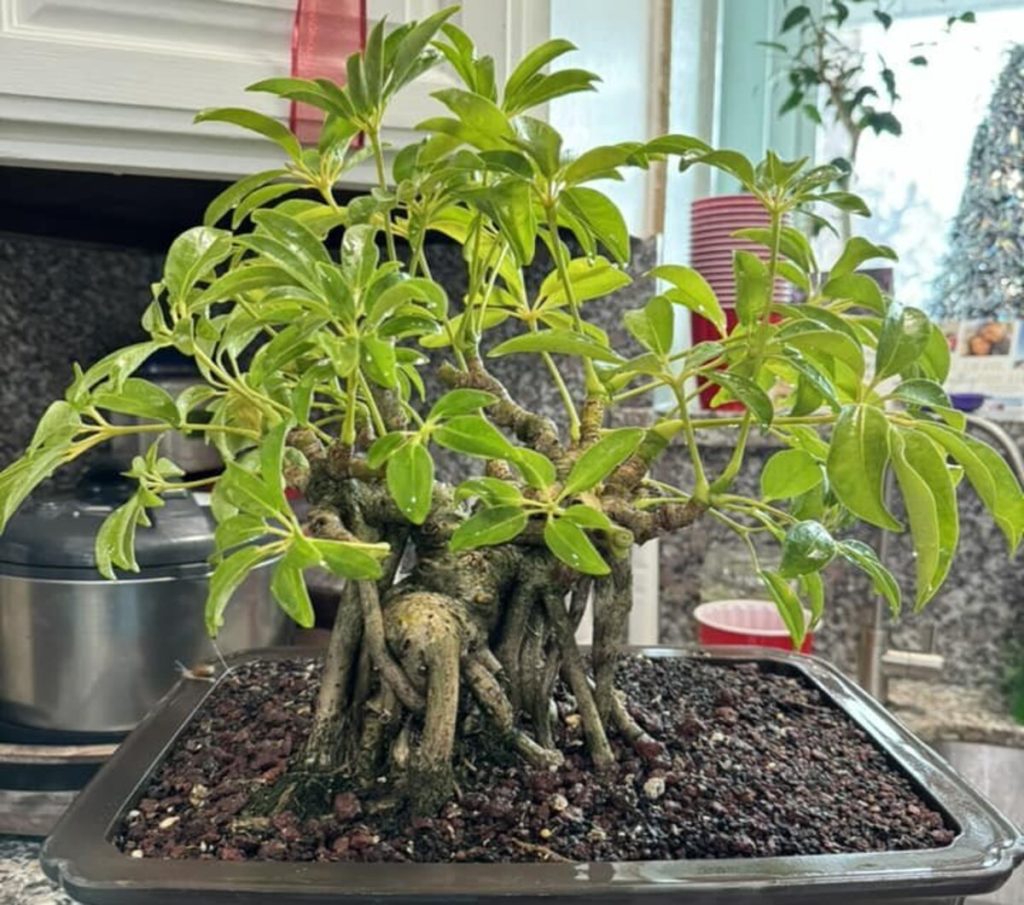
How to Care and Maintain Hawaiian Umbrella Bonsai
Caring and maintaining a Hawaiian Umbrella Bonsai is a vital aspect of owning one. Here are some tips on how to care for and maintain your Hawaiian Umbrella Bonsai:
Watering: One of the most crucial components of caring for your Bonsai tree is watering. When the soil is somewhat dry to the touch but not entirely dry, water your Hawaiian Umbrella Bonsai. Watering should be done extensively to ensure that the water gets to the roots. Overwatering can cause root rot, whilst underwatering can cause the tree to die.
Fertilizing: Bonsai trees require regular fertilization to maintain their health and beauty. Use a balanced, water-soluble fertilizer every two weeks during the growing season, from spring to autumn.
Pruning: Pruning is essential to maintain the desired shape and size of your Hawaiian Umbrella Bonsai. It also helps to promote new growth and prevent the tree from becoming too leggy. Prune in early spring to encourage new growth.
Wiring: Wiring is used to shape and style your Bonsai tree. It should be done with care to avoid damaging the tree. Only use flexible copper or aluminum wire, and remove the wire after a few months to prevent it from digging into the bark.
Sunlight: Hawaiian Umbrella Bonsai requires bright, indirect sunlight for optimal growth. Too much direct sunlight can damage the leaves and cause them to yellow or burn. Ensure that your Bonsai tree gets at least 6 hours of sunlight a day.
Temperature: This Bonsai tree prefers warm temperatures between 60°F to 80°F. Protect the tree from extreme temperatures and drafts.
Repotting: Repot your Hawaiian Umbrella Bonsai every 2-3 years, depending on its growth rate. Use fresh, well-draining soil, and prune the roots to prevent them from becoming too tangled.
Pest control: Regular monitoring and treatment with insecticidal soap can help prevent infestations of common pests like spider mites and scale insects.
Hawaiian Umbrella Bonsai Care Sheet
| Aspect | Care Tips |
| Watering | Water when the top inch of soil is dry. Use room-temperature water and ensure proper drainage. |
| Fertilizing | Fertilize every two weeks during the growing season with a balanced, water-soluble fertilizer. |
| Pruning | Prune regularly to maintain size and shape. Use sharp, clean pruning shears and cut just above a leaf node. |
| Wiring | Wire branches gently to shape and style the tree. Be careful not to wire too tightly or for too long. |
| Repotting | Repot every two to three years in well-draining soil. Prune the roots and use a slightly larger pot. |
| Sunlight | Requires bright, indirect sunlight. Protect from direct sun exposure in hot summer months. |
| Temperature | Prefers temperatures between 60-75°F. Protect from extreme heat or cold. |
| Pest Control | Monitor for pests such as spider mites, mealybugs, and scale. Use insecticidal soap or neem oil as needed. |
| Soil | Use the well-draining soil including natural materials, perlite, and vermiculite. |
By following these tips, you can ensure that your Hawaiian Umbrella Bonsai stays healthy and beautiful for years to come. Remember that caring for a Bonsai tree requires patience, attention to detail, and consistent care.
Conclusion
The Hawaiian Umbrella Bonsai is a beautiful addition to any bonsai collection, but it requires regular care and attention. Proper watering, fertilizing, pruning, and monitoring for pests are essential for its health and longevity. With dedication and patience, your Hawaiian Umbrella Bonsai can flourish and bring a touch of the tropics to your home or office.
FAQ
Q: Is the Hawaiian Umbrella Bonsai a good choice for beginners?
A: Surely, because it is easy to care for and grows well inside, the Hawaiian Umbrella Bonsai is an excellent choice for beginner.
Q: Can the Hawaiian Umbrella Bonsai be grown outdoors?
A: Yes, the Hawaiian Umbrella Bonsai can be grown outdoors in warm, tropical climates. However, it should be protected from direct sun exposure and extreme temperatures.
Q: How often should I water my Hawaiian Umbrella Bonsai?
A: Water your Hawaiian Umbrella Bonsai when the top inch of soil is dry. This may be once or twice a week, depending on the humidity and temperature of your environment.
Q: What type of soil is best for my Hawaiian Umbrella Bonsai?
A: Soil composed of peat moss, perlite, and vermiculite, among other organic and inorganic components, drains well and is ideal for a Hawaiian Umbrella Bonsai.
Q: How do I fertilize my Hawaiian Umbrella Bonsai?
A: Fertilize your Hawaiian Umbrella Bonsai every two weeks during the growing season with a balanced, water-soluble fertilizer.
Q: When should I prune my Hawaiian Umbrella Bonsai?
A: Prune your Hawaiian Umbrella Bonsai regularly to maintain its size and shape. It is best to prune in the spring or summer before new growth appears.
Q: How do I wire my Hawaiian Umbrella Bonsai?
Gently wire the branches of your Hawaiian Umbrella Bonsai to shape and style the tree. Be careful not to wire too tightly or for too long, as this can damage the branches.
Q: How do I repot my Hawaiian Umbrella Bonsai?
Repot your Hawaiian Umbrella Bonsai every two to three years in well-draining soil. Prune the roots and use a slightly larger pot.
Also Read:

